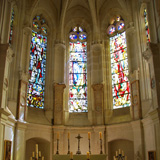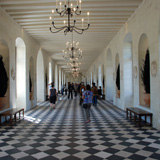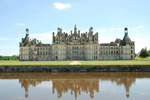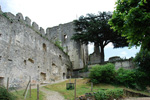History
The Château de Chenonceau spans across the River Cher in the Indre-et-Loire department of the Loire Valley in France. It is affectionately known as the Ladies' Castle due to the woman who influenced the architecture and construction of the castle through the centuries.
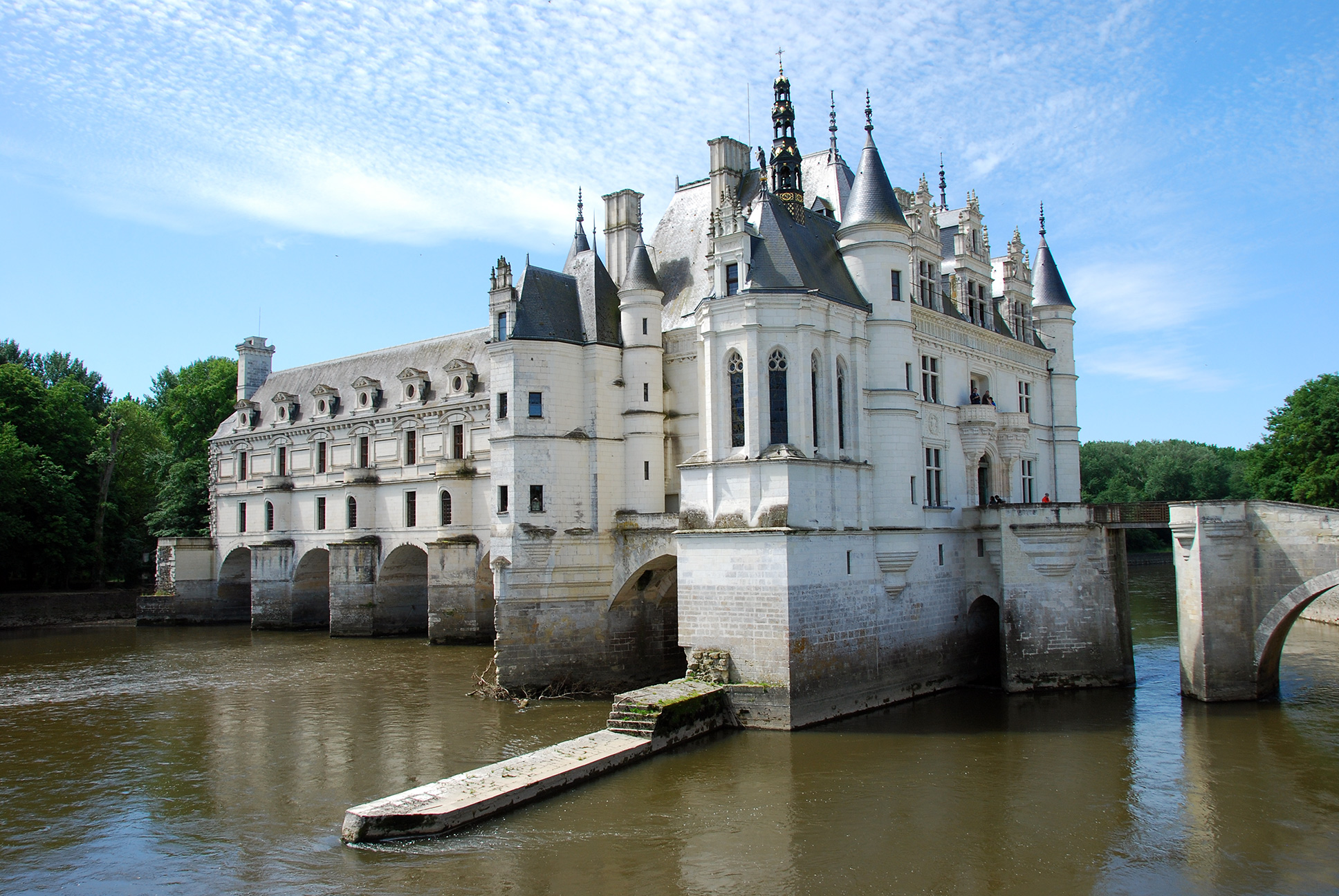
Chenonceau is first mentioned in writings from the 11th century. In the 13th century, the estate belonged to the Marques family. In 1411, during the Hundred Years' War between France and England, Jean Marques I, Lord of Chenonceau, supported Duke de Bourgogne and the English, enemies of King Charles VII. Jean was sentenced and punished as a traitor when the English were driven out. His two chateaux, Chenonceau and Houdes, were burned to the ground, and the forest area was cut to the height of a man. In 1432, Charles VII pardoned Jean's son as the war with the English continued, and the king needed all the military support he could find. The Marques Tower is the only remaining part of the first château at Chenonceau. Opposite the tower was the mill with its foundations in the River Cher.
On February 7th, 1512, Thomas Bohier, Lieutenant General to King Charles VIII, purchased Chenonceau from Pierre Marques and demolished it except for the 15th century keep. He spent the next six years building a new residence, overseen by his wife, Katherine Briçonnet, the first of many women who would influence the design and construction of the castle. In 1535, King Francis I seized the castle from Bohier's son for unpaid debts to the crown after learning of Thomas Bohier's abuse of power as Viceroy of Naples.
After Francis died in 1547, Henry II offered the castle as a gift to his mistress, Diane de Poitiers, who commissioned Philibert de l'Orme to build an arched bridge across the River Cher in 1555 to connect Chenonceau to the opposite bank of the river. Diane also oversaw designing and planting gardens in four triangles and fruit trees. It was also in 1555 when the castle officially passed from the crown to Diane after years of legal manoeuvers to own the château.
Henry died in a jousting accident on July 10th, 1559. Afterwhich, his widow, Catherine de Medici, forced Diane to exchange Chenonceau for the Château de Chaumont, and Catherine made Chenonceau her favorite home. Catherine spent vast amounts of money on Chenonceau and hosting parties at the castle. In 1560, during the celebrations for the ascension to the throne for her son Francis II, the first-ever fireworks display in France took place at Chenonceau. She added the long gallery to the bridge that Diane had built across the River Cher, additional rooms between the chapel and library, and a service wing on the west side of the courtyard.
In January 1589, the castle passed to Louise of Loraine, Catherine's daughter-in-law and wife of King Henri III, after Catherine's death. Louise was at Chenonceau when she learned of Henry's assassination in August of 1589. She spent the next 11 years wandering around the castle in mourning, surrounded by black tapestries on the walls.
Henri IV paid off Catherine De Medici's debts, which Louise had inherited, to obtain Chenonceau for his mistress Gabrielle d'Estrées. Louise left the castle to her niece Françoise de Lorraine, who was just six years old then, and betrothed to the four-year-old César de Bourbon, Duke of Vendome, and son of Henri IV and Gabrielle. The Bourbons spent little time at the castle except for hunting. In 1650, Louis XIV was the last king to visit the castle. In 1720, the Château de Chenonceau was bought by the Duke of Bourbon, who sold off all of the castle's contents, and many of the statues were moved to Versailles.
In 1733, the estate was sold to a squire named Claude Dupin for 130,000 livres. His wife, Louise Dupin, was a beautiful and highly cultivated woman with the arts in her blood. Her literary salon at Chenonceau hosted many leaders of the Enlightenment, such as Voltaire, Montesquieu, and Fontenelle, as well as the Marquise de Tencin and the Marquise de Deffand. Louise saved Chenonceau from destruction during the French Revolution because it was essential as the only bridge that crossed the River Cher for miles.
In 1864, a wealthy heiress named Marguerite Pelouze purchased Chenonceau for 850,000 francs and commissioned its restoration. This resulted in renewing the interior and removing several of the additions made by Catherine de Medici, including the rooms between the chapel and library and her alterations to the north façade, figures of Apollo, Cybele, Hercules, and Pallas, which were moved to the park. The changes also resulted in the bankruptcy of Marguerite, and the castle was seized and sold.
In 1913, after a few acquisitions of the castle, Chenonceau was purchased by Henri Menier, a member of the Menier family who were famous for their chocolates. Gaston Menier used the long gallery of the castle as a 120-bed hospital ward during World War I. He installed running water and electricity to improve the living conditions. Chenonceau was bombed by the Germans in 1940 during World War II. It was also used as a way for Jews and villagers to escape occupied France on one side of the River Cher across the long gallery to freedom. Allied forces bombed the castle on June 7th, 1944, when German forces occupied it. The bombing damaged the chapel, and its windows were destroyed.
In 1951, the Menier family had the Château de Chenonceau restored by Bernard Voisin, who restored the castle to its former glory.
Castle Highlights
Besides the Royal Palace of Versailles near Paris, Chenonceau is the most visited Château in France. Chenonceau is the quintessential fairytale castle, with its finely carved white freestone resting over the River Cher on the bridge's arches. It seems to float between water and sky.
The castle can be visited at your own pace with an optional audio tour. There are several rooms worth seeing at Chenonceau. The chapel is impressive with its vaulted ceiling built with ribbed arches and large stained glass windows. The windows were destroyed during bombings in World War II in 1944 and replaced in 1954. Panels in the chapel depict Jesus' appearance to Saint Thomas after the resurrection. Behind the altar is a crypt constructed by Madame Pelouze as she wished to be buried at Chenonceau, but it remains empty as she had to sell the castle.
The long gallery that spans the width of the River Cher is open and bright. It is 60 meters long, 6 meters wide, and has 18 windows. It's decorated with Italian works of art, statues, and marble.
Several bed chambers are finely decorated to reflect the people who once occupied those rooms. Diane de Poitier's bedroom has a large picture of her rival, Catherine de Medici, above the fireplace. Catherine de Medici's bedroom has a gilded coffered wooden ceiling with the ceiling squares adorned with initials, including the intertwined C and H for Catherine and Henri. The Renaissance-style canopy bed is held together by wooden dowels, making it easy to dismantle and move as lords at the time frequently moved from castle to castle. Louise de Lorraine's bedroom is quite the opposite of the other rooms. It's decorated in black to reflect the inconsolable Louise after her husband's death.
Chenonceau has two formal gardens to explore and a hedge maze formed by 2,000 yew trees. The avenue approaching the castle from the shop is lined with plane trees, adding to the fairytale ambiance surrounding the estate.
You can easily spend half a day to a full day visiting Chenonceau. If you spend only half a day, the Château de Chambord is close enough to see the same day.
Château de Chenonceau is also haunted.
